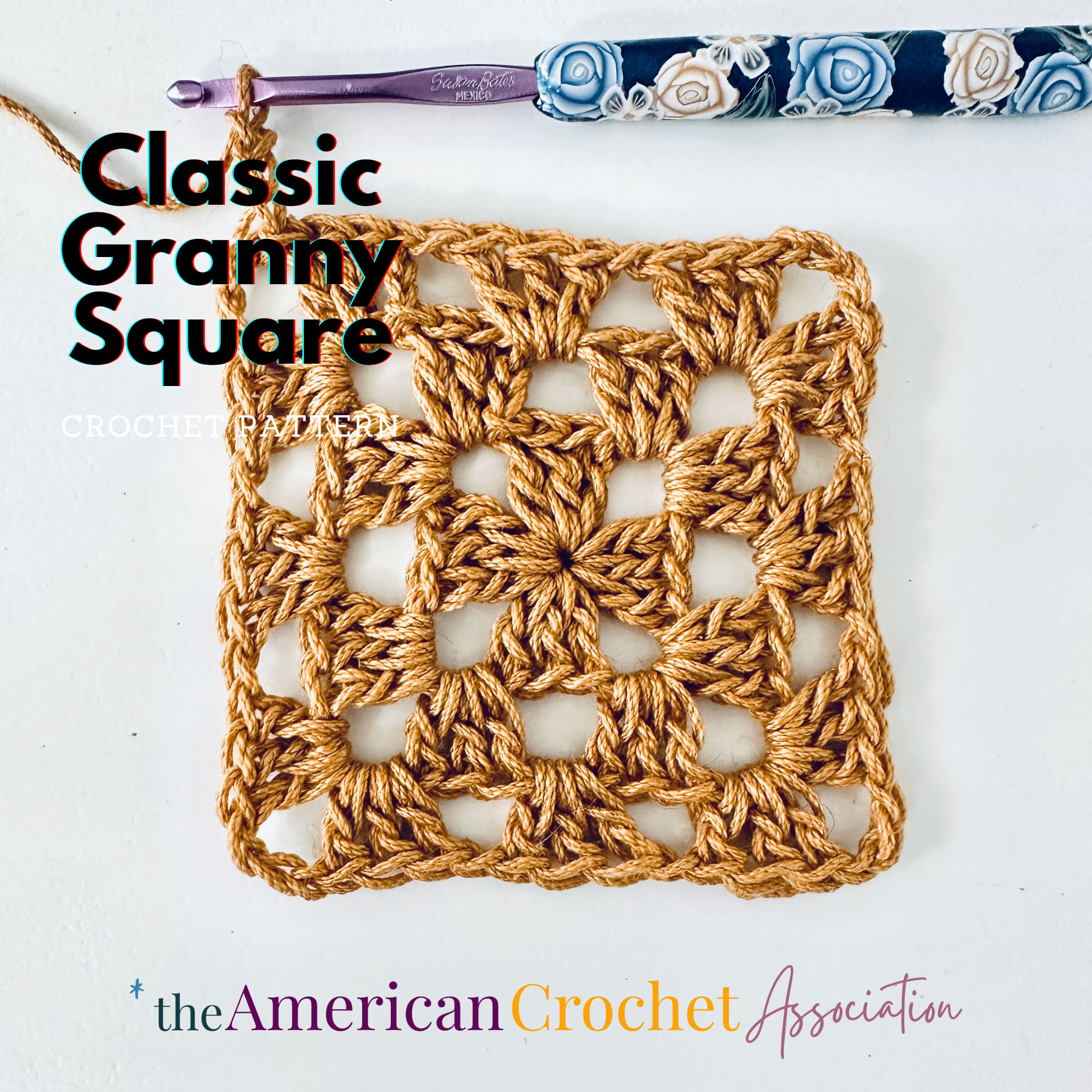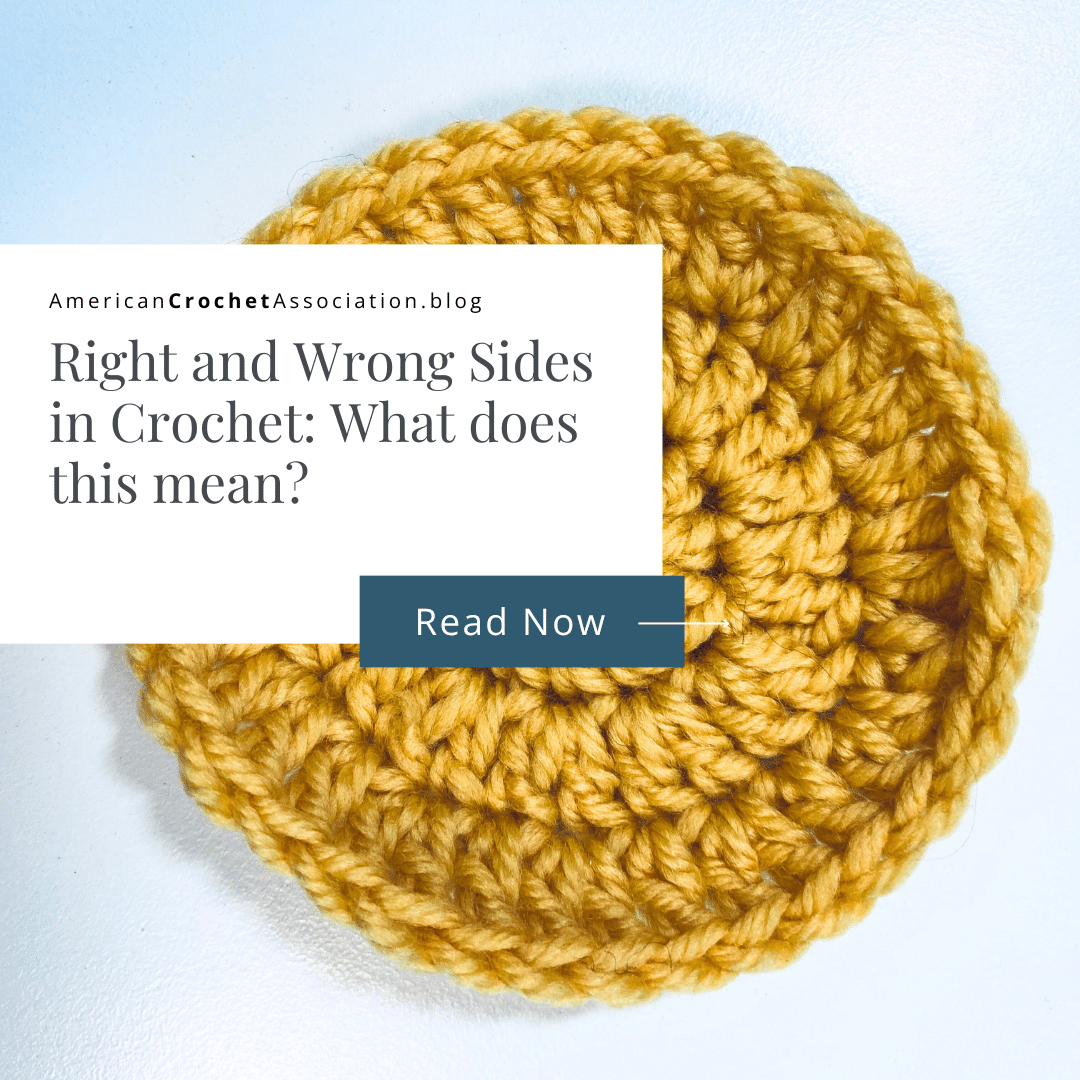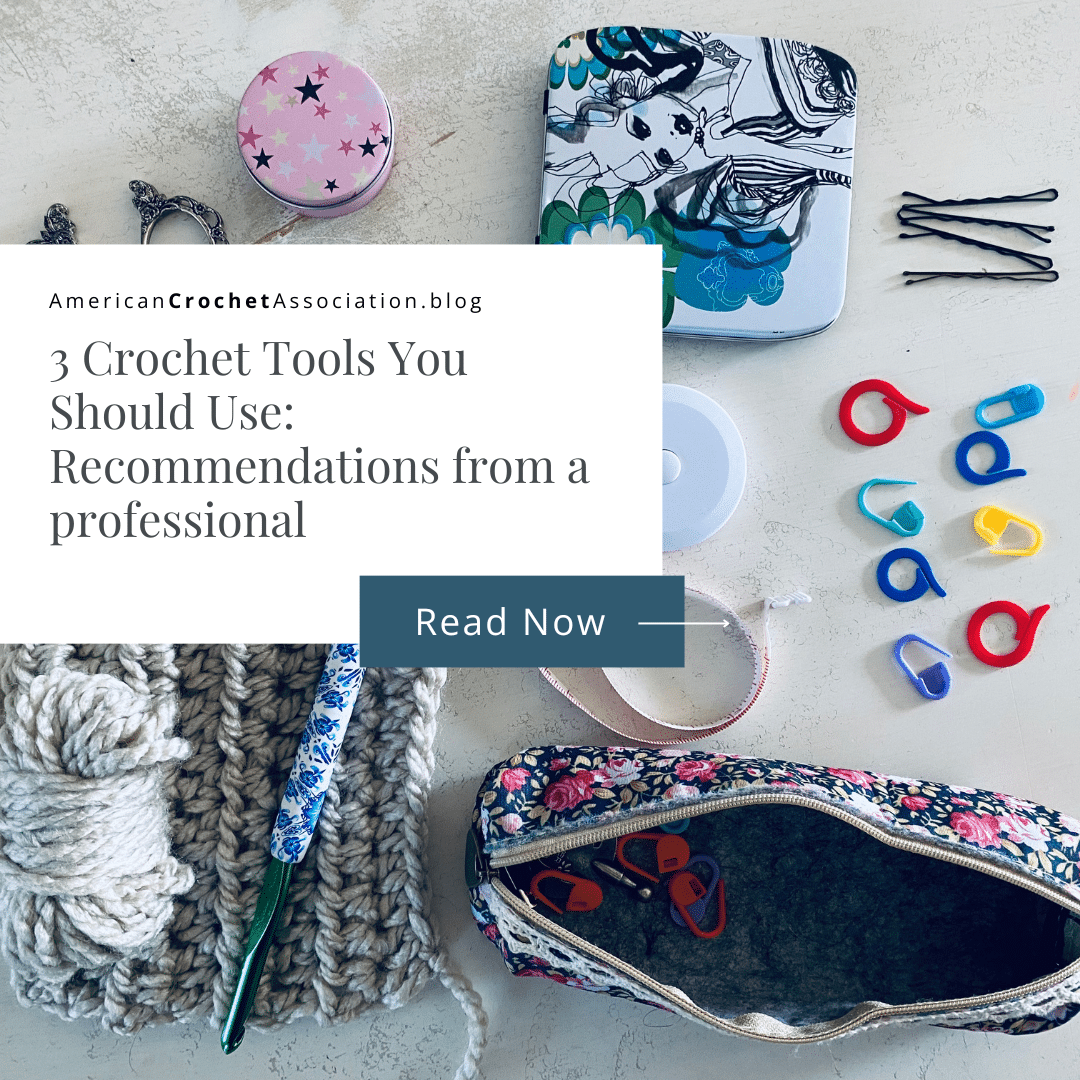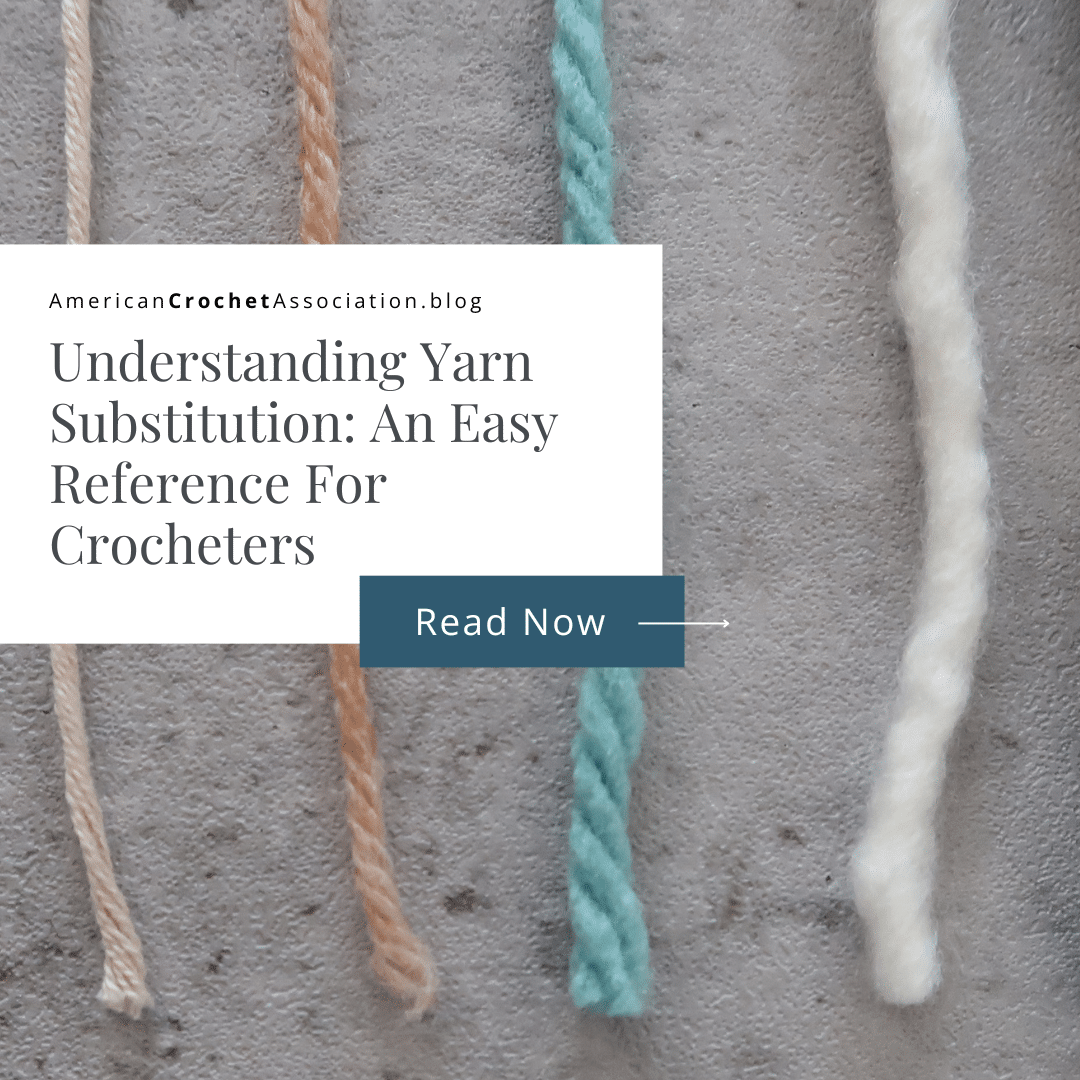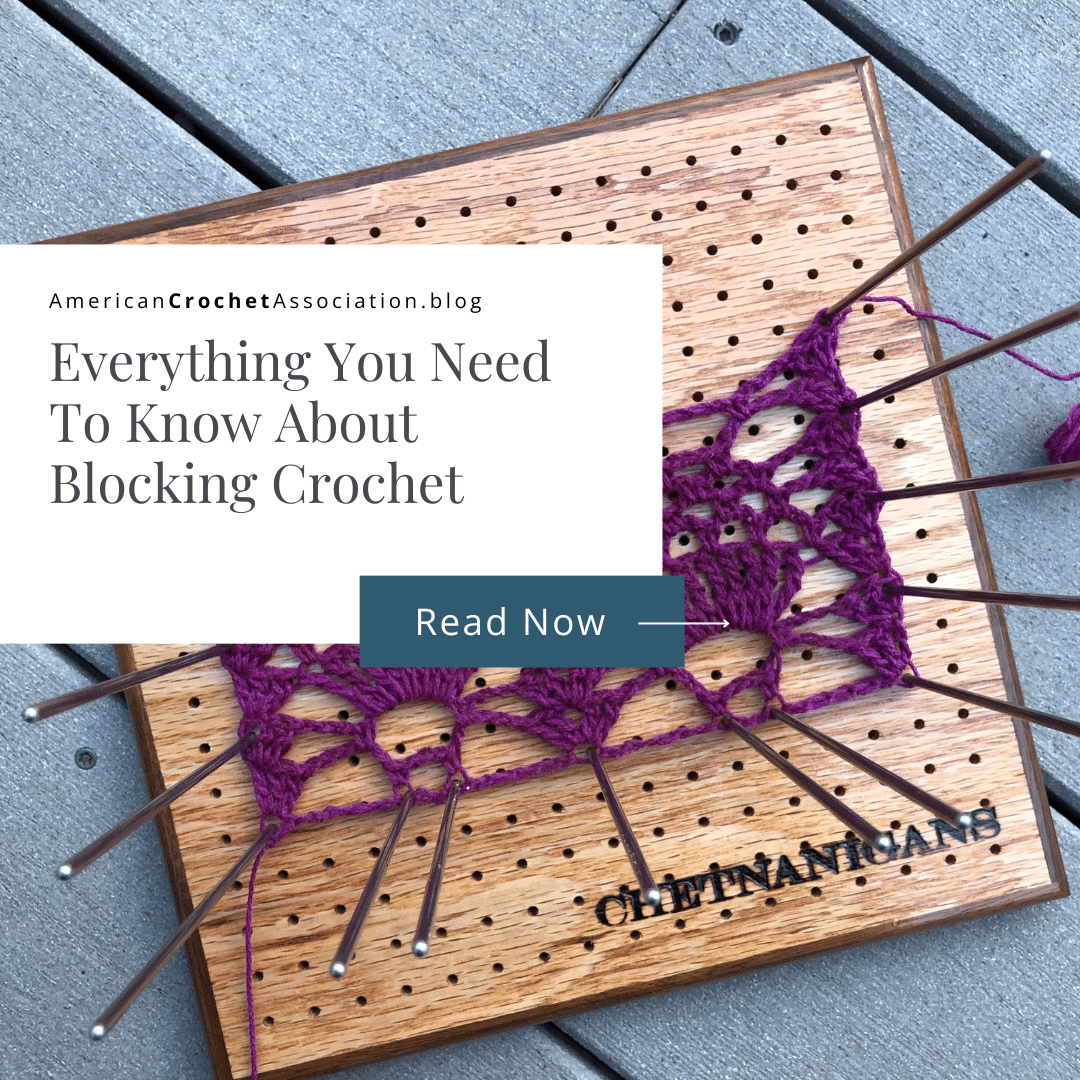Reading and following crochet patterns can pose challenges due to the numerous complicated terms, crochet abbreviations, and specific acronyms employed in the craft.
How frustrating!
When you’re gaining crochet experience, just diving into a pattern may leave you with more questions than answers, especially when it seems every independent designer, magazine, book and blog each have a different way of writing crochet abbreviations.
Why are there so many acronyms in crochet?
What do all these crochet acronyms mean?
What if a pattern uses a crochet term or crochet acronym, and doesn’t explain it?
If you want to understand crochet acronyms, crochet terms, and crochet abbreviations, and are looking for cheat sheets to have more confidence when following crochet patterns, we can help.
Table of contents
- An overview of Crochet Standards and Guidelines
- Unnecessary Crochet Acronyms
- What are basic stitches in crochet?
- Differences in US and UK crochet terms
- What are specialty stitches in crochet?
- What are techniques in crochet?
- Is there a crochet stitch and technique master list?
- Apply what you’ve learned about crochet abbreviations
Estimated reading time: 7 minutes
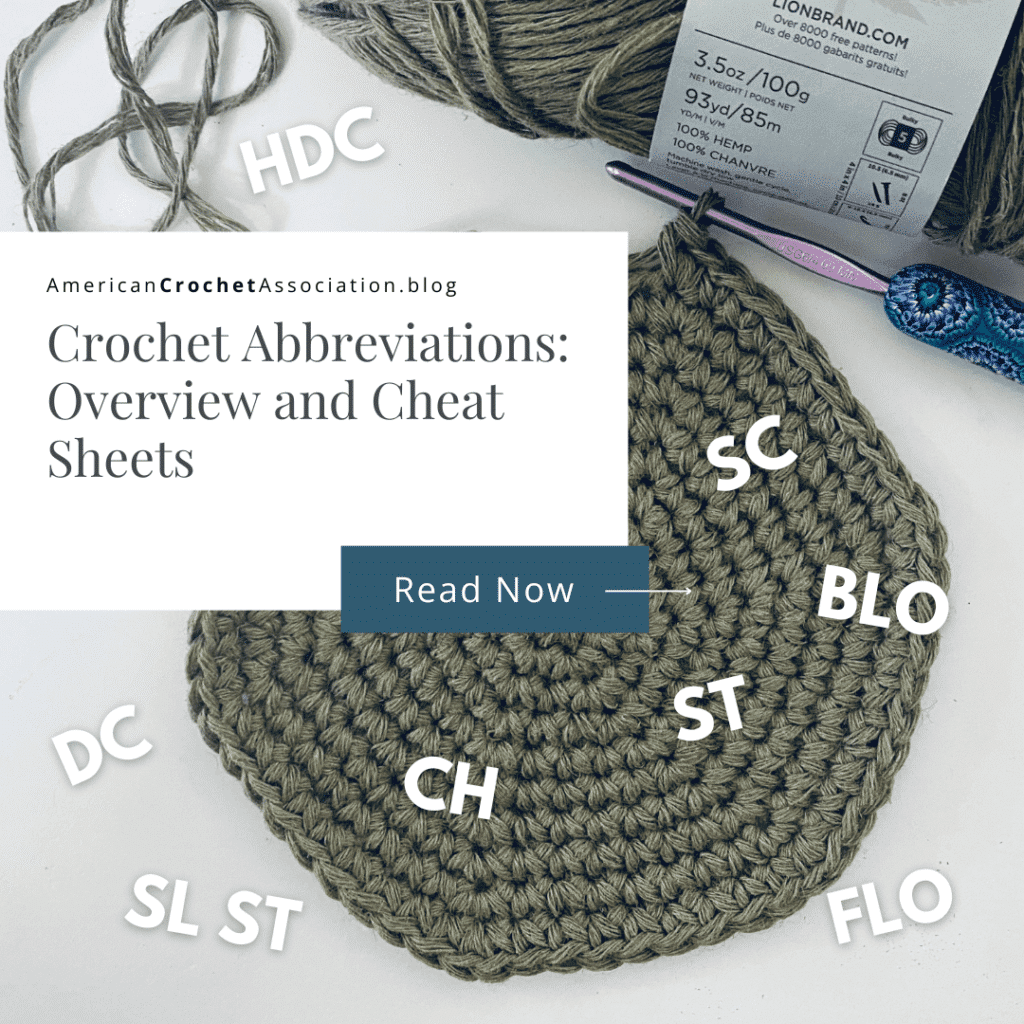
An overview of Crochet Standards and Guidelines
Crochet patterns typically follow universal standards and guidelines (which are outlined by the Craft Yarn Council), to make them easy to read, evaluate, and follow.
These standards include crochet terms and definitions for basic stitches, specialty stitches, and crochet techniques.
In crochet, acronyms help to condense stitches because the technical instructions required to complete them are lengthy to write out.
This is especially because each stitch can be referenced multiple times in a single pattern.
And so, a good formatting rule is to standardize basic crochet stitch names, create universal definitions, and apply acronyms for ease of writing and reading.
Unnecessary Crochet Acronyms
The goal of using acronyms in crochet is to make reading and following a pattern easier at a glance, and pattern writers should use these with great intention.
It is not a good writing practice to abbreviate non-crochet, common words like: beginning, turn, work, skip, next, repeat and into.
These terms do not take up a lot of space, are likely used just a few times, and we have a universal understanding for what each one means.
Do we see abbreviations for common words in patterns? Yes.
Is it necessary? Absolutely not.
In fact, turning common words that are not crochet specific into acronyms can further confuse pattern instructions into looking far more complex.
These are unnecessary acronyms.
Use acronyms intentionally, reserving them for standard crochet terms, stitches, and techniques.
Furthermore, any acronym utilized within the instructions must be listed in the Stitch guide or Specialty Stitch & Technique Guide, which should appear on the cover page of a pattern before the instructions.
What are basic stitches in crochet?
Basic crochet stitches include chain, single, half double, double and triple.
These are known as the most basic because all other stitches and stitch combinations are variations and combinations of these.
These should be acronyms in any crochet pattern, let’s see why…
Instead of writing out:
Yarn over, insert hook into next stitch, yarn over, pull through stitch, yarn over, pull through two loops on hook, yarn over, pull through two loops on hook.
This group of instructions (when completed together) is universally known as a US Double Crochet stitch.
To save space within a pattern, a writer will shorten the term to an acronym (Dc), and add it to the Stitch Guide on the cover page. Then, the instructions will simply reference DC every time this particular set of instructions should be completed in a pattern.
By following this format, the pattern writer has not only condensed a few lines of instructions down to an acronym, but you can now glance at the acronym and know exactly what it means and what to do.
Basic crochet stitches like Chain, Single, Half Double, Double and Triple do not require a definition on the cover page because these are considered universal, without other interpretations or variations.
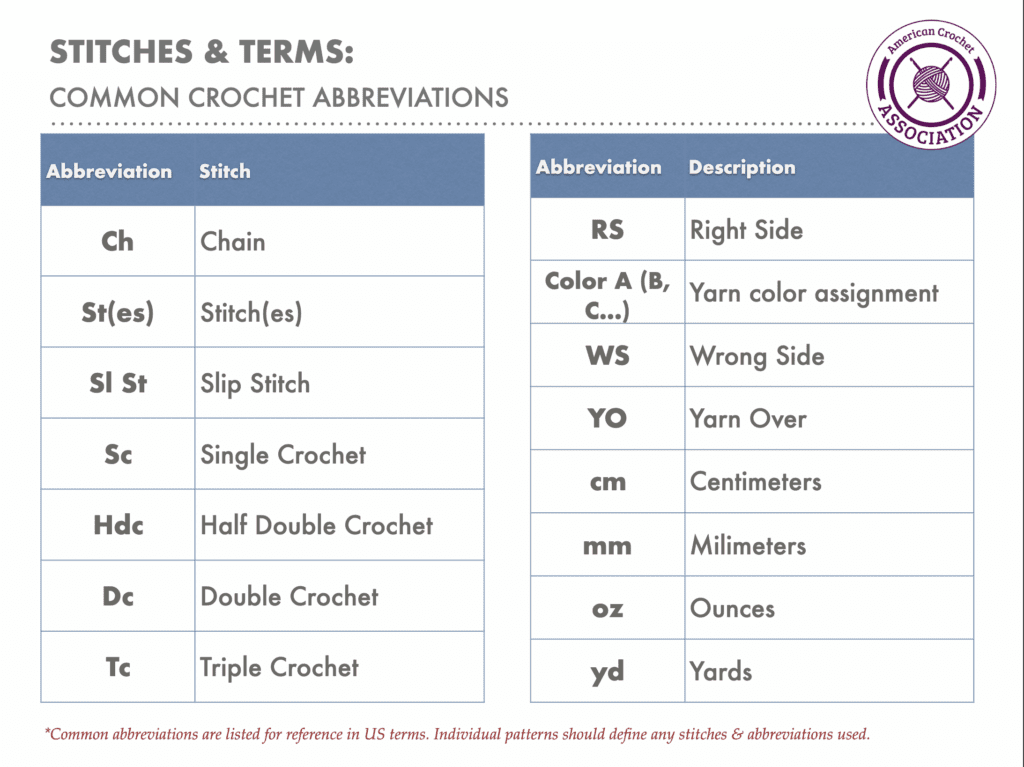
On the most basic level, other universally recognized terms include:
RS, Color A(B, C…), WS, YO, cm, mm, oz and yd (see our chart above for descriptions of each).
Because most of these are universally understood outside crochet, they may be referenced without technical description or definition (with the exception of YO = Yarn Over, which is a crochet specific term).
Remember, any acronym used within pattern instructions must be listed on the cover page.
CLICK HERE for a video tutorial of each basic crochet stitch!
Differences in US and UK crochet terms
It is important to note that while the terms we use are the same, the US may not follow the same instructions for each basic crochet stitch (find a list of differences for US, UK and Canada here).
For example, a US Double Crochet stitch does not have the same definition (technical instructions) of a UK Double Crochet stitch.
- US Double Crochet (Dc) = Yarn over, insert hook into stitch, yarn over, pull through stitch, yarn over, pull through two loops, yarn over, pull through two loops.
- UK Double Crochet (Dc) = Insert hook into stitch, yarn over, pull through stitch, yarn over, pull through two loops.
And so, when working in UK terms, a Double Crochet (Dc) is actually worked like a US Single Crochet (Sc).
Here is a comparison chart of US and UK common crochet terms, stitches, and techniques, including the definition for each.
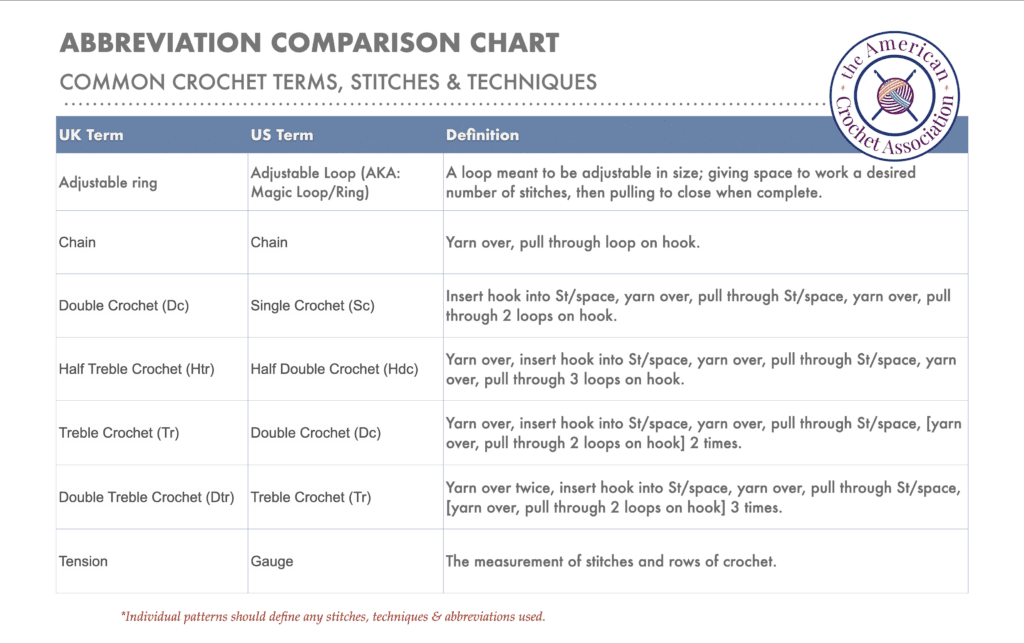
What are specialty stitches in crochet?
Specialty stitches are variations and combinations of basic crochet stitches.
While some of the terms may be familiar, the instructions to complete them could vary.
Specialty Stitches is a separate section on the cover page of a pattern that should list any specialty stitch used, and include the definition (technical instruction) for each.
For example, a pattern cannot simply reference a Bobble without also providing a definition.
Why?
There are quite a few ways a Bobble can be worked up!
You can use the foundations of a Double or Triple crochet stitch to complete this, and work it up in any number of repeats (2, 3, 4, 5…).
And so, pattern writers should be clear about exactly how their Bobble was constructed so that you can work up a sample just like they did.
Other specialty stitches include the Cluster, Popcorn and Puff stitches; each of those have variations that will also require the pattern writer to include a definition on the cover page.
CLICK HERE to learn more about Bobble, Cluster, Popcorn & Puff stitches.
What are techniques in crochet?
Crochet techniques define a particular way of completing something in crochet, like where a stitch should be placed (BLO = Back Loop Only) or what we do with stitches (Dc2Tog = Decrease Two Double Crochet Stitches Together).
To really understand how to follow the instructions for a technique, it’s important to understand stitch and row counting and anatomy because some things are universal, like:
- Back and front loops of a stitch.
- The post (body) of a stitch.
- The front and back (right and wrong side) of a stitch.
CLICK HERE to learn more about stitch anatomy and counting!
And, some crochet techniques are simply a variation to complete something, like:
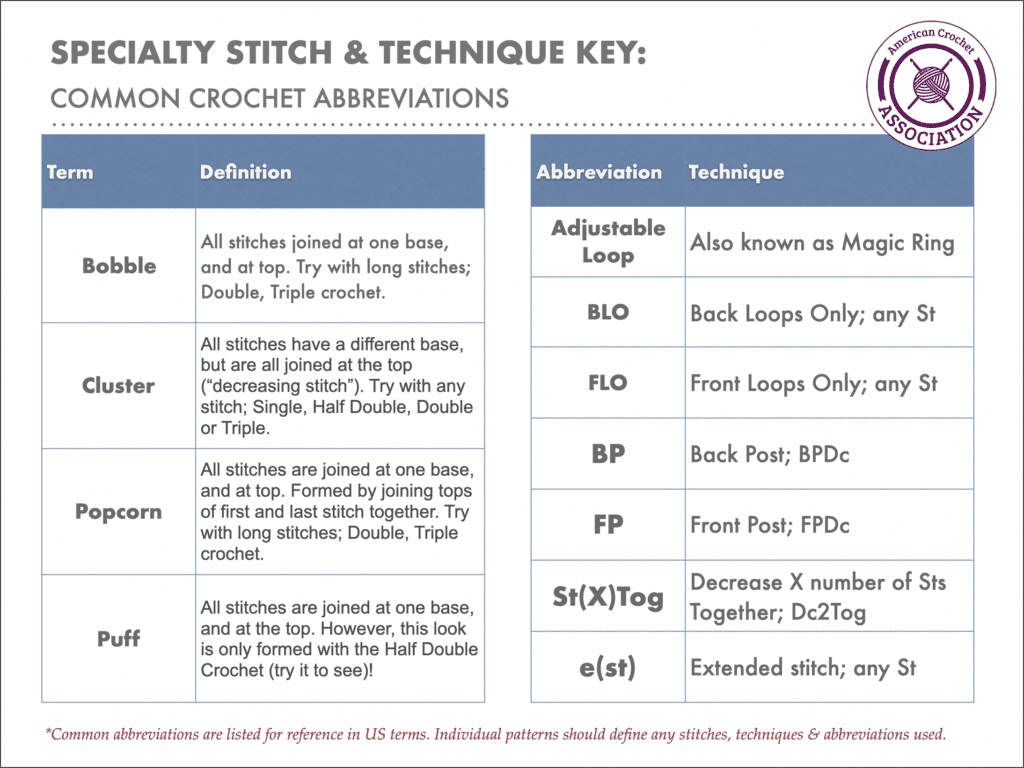
Is there a crochet stitch and technique master list?
You might be wondering why our abbreviation lists are so short.
Aren’t there hundreds of variations and combinations?
Yes, there literally are.
In fact, one of the most wonderful things about crochet is how inventive we can be with stitch placement, stitch variation, and new techniques!
Remember, the purpose of abbreviations in crochet is to condense and simplify instructions, so that we can follow them at a glance with greater ease.
And so, when a pattern references an abbreviation, it is the responsibility of the pattern writer to use universal terms and standards, outline each one on the cover page (Stitch Guide, Specialty Stitch Guide, Technique Key), and include accurate and complete definitions (technical instruction) for each one.
Don’t feel overwhelmed because the possibilities and combinations are endless – you’re not a mindreader, and it’s humanly impossible to memorize every single combination!
Apply what you’ve learned about crochet abbreviations
Take a peek at our Pumpkin Hat (free to view on our blog), and see how the Stitch Key and Specialty Stitches & Techniques sections list each abbreviation, term, and technical instruction.
Note that definitions and video tutorials (when you click on the links)are given, which should make your job as a pattern reader easier.
CLICK HERE to find the Pumpkin Hat Crochet Pattern.
Did you learn anything new about crochet abbreviations?
Click Here to start a conversation in our community!
Peace, Love & Crochet
Salena


